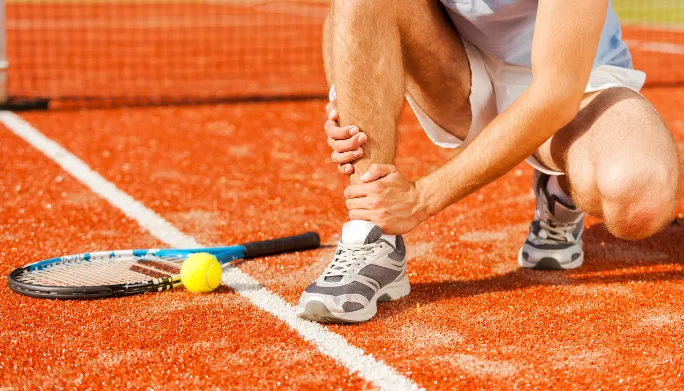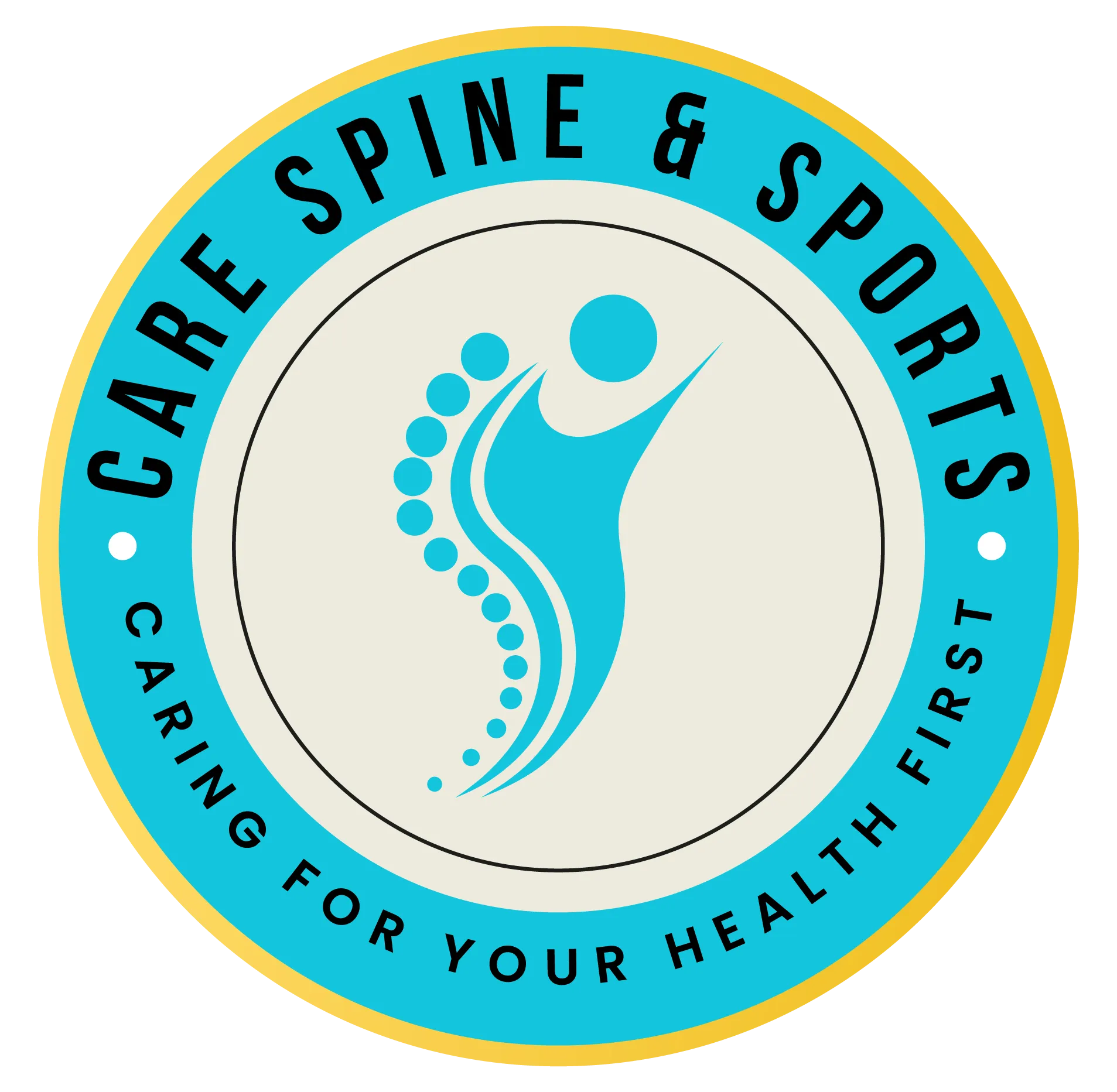Sports Chiropractor & Physical Therapist | Clifton & Woodland Park
Sports Chiropractor and Physical Therapist for Injuries in Clifton, NJ & Woodland Park
Get Back to Peak Performance with Comprehensive Sports Injury Treatment at Care Spine & Sports
A sports injury doesn’t just affect your game—it impacts your movement, endurance, and confidence. Whether you’re a competitive athlete or an active weekend warrior, the right combination of physical therapy and chiropractic care is key to a full and safe recovery. A sprained ankle, a strained hamstring, or a knee ligament tear shouldn’t hold you back longer than necessary. At Care Spine & Sports in Clifton & Woodland Park, NJ, we specialize in comprehensive sports injury rehabilitation combining advanced physical therapy techniques with targeted chiropractic care to help you heal faster, regain strength, and prevent future injuries.

Expert Sports Injury Rehab: Physical Therapy & Chiropractic Care in Clifton & Woodland Park, NJ
Why Our Dual Approach Works Better
Recovering from a sports injury isn’t just about rest—it’s about strategic, hands-on therapy and guided movement restoration. Our integrated rehabilitation programs combine the best of both physical therapy and chiropractic care, focusing on:
- Accelerated recovery to get you back to peak performance safely
- Sport-specific movement training to restore agility, strength, and endurance
- Spinal alignment optimization for improved biomechanics and performance
- Injury prevention strategies to protect against reinjury and enhance resilience
- Comprehensive pain management using both therapeutic exercise and manual adjustments
We don’t just treat the injury—we train your body to perform better than before through our comprehensive approach that addresses both structural alignment and functional movement patterns.
Common Sports Injuries & Our Integrated Treatment Approach
Athletes push their bodies to the limit, making injury prevention and expert rehabilitation essential. Our team combines physical therapy and chiropractic expertise to treat a wide range of sports-related conditions:
Ankle Sprains & Foot Injuries
Ankle sprains often result from sudden direction changes or unstable landings, leading to pain and instability. Our integrated approach includes joint mobilization, balance training, progressive strengthening, and chiropractic adjustments to restore proper alignment. For comprehensive care of Foot and Ankle pain Clifton, NJ & Woodland Park, we combine therapeutic exercises with manual therapy to restore stability and prevent future sprains.
Hamstring Strains & Lower Body Injuries
Explosive sprinting or overstretching can cause hamstring strains, leading to pain and reduced mobility. Our treatment includes deep muscle release, tissue regeneration techniques, progressive flexibility training, and Spinal manipulation in Clifton, NJ & Woodland Park to address any compensatory patterns that may have developed. This comprehensive approach promotes healing and prevents reinjury.
Shoulder Dislocations & Upper Body Injuries
High-impact collisions or forceful overhead movements can lead to shoulder dislocations, affecting joint stability. Our rehabilitation involves controlled strengthening, neuromuscular retraining, mobility restoration, and spinal adjustments to optimize the kinetic chain. We address not just the shoulder but the entire upper body mechanics to stabilize the joint and improve function.
Knee Ligament Tears & Lower Extremity Injuries
Sudden pivots, high-impact landings, or direct trauma can cause ligament tears in the knee, compromising stability. Our recovery protocol focuses on movement pattern retraining, controlled resistance exercises, agility drills, and addressing any related issues with Hip and knee pain in Clifton, NJ & Woodland Park. We ensure proper biomechanics throughout the lower kinetic chain to restore knee function and prevent future injury.
Back Injuries & Spinal Conditions
Sports-related back injuries are common across all athletic activities. Our comprehensive approach to Back pain in Clifton, NJ & Woodland Park combines targeted physical therapy exercises with precise chiropractic adjustments to restore spinal function, reduce pain, and improve performance. We address both acute injuries and chronic conditions that may affect athletic performance.
Why Sports Rehabilitation with Chiropractic Care is Different
Athletes need more than basic physical therapy—they need a specialized approach that considers the demands of their sport and the importance of proper spinal alignment. Our integrated programs include:
Sport-Specific Functional Training – Exercises designed to mirror game-time movements, improving coordination, reaction time, and strength while maintaining proper spinal alignment.
Biomechanical Analysis & Movement Optimization – Identifies weaknesses and improper movement patterns that could contribute to re-injury, with chiropractic assessment of spinal function and alignment.
Comprehensive Manual Therapy – Combines physical therapy techniques with chiropractic adjustments to address both soft tissue restrictions and joint dysfunction.
Injury Prevention Strategies – Teaches proper mechanics, strengthening techniques, and maintains optimal spinal health to minimize the risk of recurring injuries.
We focus on more than recovery—we help you become stronger, faster, and more resilient in your sport through our comprehensive approach.
Treatment Benefits of Our Integrated Sports Injury Care
Accelerated Healing
Our combination of physical therapy and chiropractic care promotes faster healing by using targeted exercises, manual therapy techniques, and spinal adjustments that help restore function and mobility. This integrated approach reduces downtime and helps athletes get back to their activities more quickly than traditional single-discipline treatment.
Comprehensive Pain Reduction
Through various manual therapy techniques, therapeutic modalities, exercises, and chiropractic adjustments, our treatment helps alleviate pain associated with sports injuries from multiple angles. This allows athletes to recover more comfortably and continue their rehabilitation with less discomfort.
Improved Range of Motion & Flexibility
Therapeutic exercises, stretching routines, and chiropractic adjustments work together to improve flexibility and range of motion in the affected area and throughout the kinetic chain. This ensures that athletes regain full movement and can perform their sports activities effectively.
Enhanced Strengthening & Conditioning
Our physical therapy protocols focus on strengthening the muscles around the injured area while chiropractic care ensures proper joint function and alignment. This combination helps support the joint, optimizes biomechanics, and prevents future injuries. By building strength and maintaining proper alignment, athletes can return to their activities with increased confidence and performance.
Superior Prevention of Re-Injury
Our team educates athletes on proper techniques, exercises, and body mechanics while maintaining optimal spinal health to prevent re-injury. By addressing both the underlying causes of the injury and promoting safe practices through our dual approach, athletes can significantly reduce the risk of future problems.
Peak Performance Enhancement
Our rehabilitation programs not only focus on recovery but also on improving overall athletic performance. By optimizing strength, flexibility, function, and spinal alignment, athletes can achieve better results in their sports activities and perform at higher levels than before their injury.
Sport-Specific Functional Training
Our treatment includes functional training exercises that mimic the movements and demands of the athlete’s specific sport, combined with proper spinal mechanics. This helps athletes transition smoothly back to their activities and ensures they are fully prepared for the physical challenges they will face.
Meet Your Expert Sports Injury Team
Neha Pathak, PT – Clinic Owner & Sports Rehabilitation Specialist
Neha Pathak brings extensive expertise in sports rehabilitation, combining advanced physical therapy techniques with comprehensive chiropractic principles. As a licensed Physical Therapist specializing in sports injuries, spine care, and athletic performance, she has helped countless athletes in Clifton & Woodland Park, NJ return to peak performance.
Professional Credentials:
- Licensed Physical Therapist with specialized sports injury training
- Extensive experience in spine care and sports rehabilitation
- Proven track record with 80+ five-star patient reviews
- Expertise in both therapeutic exercise and manual therapy techniques
Treatment Philosophy: Neha Pathak believes in a comprehensive approach to sports injury rehabilitation that addresses not just the immediate injury but the entire kinetic chain. Her integrated treatment protocols combine the best of physical therapy and chiropractic principles to ensure optimal recovery and performance enhancement.
Areas of Expertise:
- Sports-specific rehabilitation programs
- Spinal alignment and biomechanical optimization
- Injury prevention and performance enhancement
- Manual therapy and therapeutic exercise prescription
Our Comprehensive Sports Injury Services
Advanced Physical Therapy Techniques
- Therapeutic exercise prescription
- Manual therapy and soft tissue mobilization
- Neuromuscular re-education
- Balance and proprioception training
- Sport-specific functional training
Specialized Chiropractic Care
- Spinal manipulation and joint mobilization
- Biomechanical assessment and correction
- Movement pattern analysis
- Postural correction and alignment optimization
- Performance-based chiropractic adjustments
Integrated Treatment Modalities
- Therapeutic ultrasound and electrical stimulation
- Heat and cold therapy applications
- Compression and decompression techniques
- Ergonomic and biomechanical counseling
- Nutritional guidance for optimal recovery
Conditions We Treat with Our Integrated Approach
Acute Sports Injuries:
- Sprains and strains
- Muscle tears and pulls
- Joint dislocations
- Ligament and tendon injuries
- Fracture rehabilitation
Chronic Sports Conditions:
- Overuse injuries
- Repetitive stress conditions
- Chronic pain syndromes
- Performance-limiting conditions
- Postural dysfunction
Sport-Specific Injuries:
- Runner’s knee and IT band syndrome
- Tennis elbow and golfer’s elbow
- Swimmer’s shoulder
- Baseball and softball injuries
- Soccer and football trauma
Convenient Locations & Flexible Scheduling
Clifton, NJ Location
Address: 881 Allwood Rd STE 1, Clifton, NJ 07012
Phone: (973) 246-7189
Hours: Monday, Wednesday & Friday: 9 AM – 7 PM
Areas Served: Clifton, Passaic, Nutley, Bloomfield, Montclair
Woodland Park, NJ Location
Address: 279 Browertown Rd Suite-108, Woodland Park, NJ 07424
Phone: (973) 837-8300
Hours: Tuesday-Friday: 1:00 PM – 7:00 PM, Saturday: 9:00 AM – 1:00 PM
Areas Served: Woodland Park, Wayne, Totowa, Little Falls, West Paterson
Frequently Asked Questions
Q: Which sports tend to have the most injuries? A: Contact sports like football, rugby, and hockey result in more impact-related injuries, while endurance sports like running and swimming often lead to overuse injuries. Our integrated approach addresses both types effectively.
Q: How long does sports rehabilitation take with your combined approach? A: The recovery timeline varies by injury severity, but most athletes see significant improvement within weeks with our structured combination of physical therapy and chiropractic care. The integrated approach often accelerates healing compared to single-discipline treatment.
Q: Do you offer training for injury prevention? A: Yes—our rehabilitation programs include comprehensive injury prevention techniques, mobility work, strengthening drills, and spinal health maintenance to keep you in top condition long after recovery.
Q: What makes your approach different from traditional physical therapy? A: Our integrated approach combines physical therapy expertise with chiropractic principles, addressing both soft tissue injuries and spinal alignment. This comprehensive treatment often results in faster recovery and better long-term outcomes.
Q: Can chiropractic care help with sports performance? A: Absolutely. Proper spinal alignment and joint function are crucial for optimal athletic performance. Our chiropractic care helps optimize biomechanics, improve range of motion, and enhance overall athletic function.
Start Your Recovery Today
An injury doesn’t have to sideline you for long. With the right combination of physical therapy and chiropractic care, you can heal, rebuild, and return to your sport stronger than before. At Care Spine & Sports in Clifton & Woodland Park, NJ, we provide personalized sports rehabilitation programs that integrate the best of both disciplines to help you recover faster, move better, and perform at your best.
Don’t let an injury hold you back. Take the first step toward comprehensive recovery today.
Contact Us:
- Clifton Office: (973) 246-7189
- Woodland Park Office: (973) 837-8300
- Email: admin@carespinenj.com
Ready to get back in the game? Contact Care Spine & Sports today and discover how our integrated approach to sports injury rehabilitation can help you achieve optimal recovery and peak performance.
Care Spine & Sports is your trusted partner for comprehensive sports injury rehabilitation in Clifton, NJ and Woodland Park. Our integrated approach combining physical therapy and chiropractic care, proven results, and athlete-focused treatment make us the premier choice for sports injury recovery and performance enhancement.


